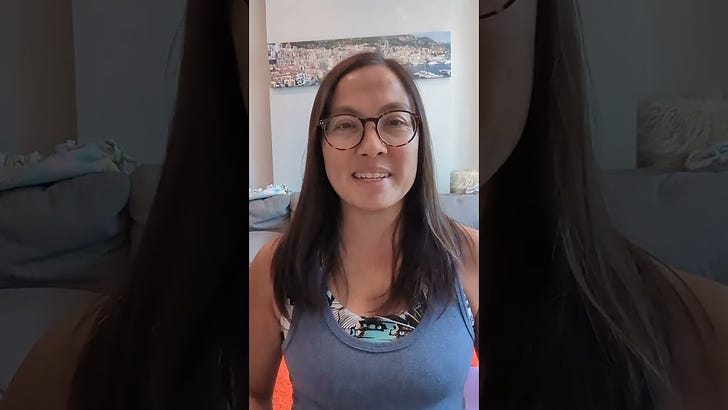“It’s hard enough to remember that one exhale can often dissipate a day’s worth of this type of stress. Or two exhales, or three. Better yet, a few minutes of slow deep breaths that gradually lengthen your exhales. The more we practice punctuating our days with long, complete exhales, the easier it becomes to remember to include them in random moments.”
-Jacquie Bullard, Yoga Mama Manual
The nitty gritty on the exhale
About a month ago I wrote a post called What Does it Mean to Take a Deep Breath and in it, I promised to share a video with guidance on breathing in a subsequent post.
I decided that even though the breath is simple, we can approach it in so many ways. In light of this, I thought it would be more practical and user-friendly if every month, I shared the nitty gritty of one aspect of breathing. Breath awareness is so much about zooming into different aspects of ourselves, but before we do that, let’s unpack some specific breathing practices one at a time.
Today, let’s talk about the exhalation; it’s one part of the breath, but as we look closer, we can call upon a whole list of ways to exhale more fully:
With sound (sigh, hiss, shhh, vocalize, lion’s breath, bhramari)
Add movement (breath of joy, cat/cow, walk, run, do cardio)
Change the shape of the body (practice poses that help you empty the air out of your lungs more easily)
With sound
If only we followed the wisdom of karate and belted out a hearty hi-yah as we moved into challenging yoga poses. Well, actually, there are some yogic techniques that use the voice to release tension and bring focus. For example, Lion’s Breath and Bramhari can be both stimulating and relaxing. Here’s an old post where I offer a video demonstration of bhramari, also known as bee breath. Sometimes, though, if you are practicing a sequence of postures it can also be nice to take a deep breath in and then vocalize, perhaps a long, loud, ‘ahhhhhhh’ to release stress and tension, or just sigh on the exhale. Other ways to use sound with the exhale are to hiss or make a ‘shhh’ sound as if telling someone to be quiet - these are simple ways to make the exhale more tangible.
Add movement
When we are still, our breath becomes shorter; when we move, the breath lengthens. It’s easy to see this when you walk briskly, run, dance, or do anything type of cardio. Breathing more deeply and exhaling more completely in these cases is almost more of a necessity than a choice. These are forms of movement that I love when I’m stressed or anxious, because it gives me the feeling of shaking off that stress and tension.
We can also use non-cardio movement to deepen the breath and extend the exhale. One of my favorites is breath of joy, or just simple cat/cow that is coordinated with the breath. Here’s a fun past post on shaking the body to release tension, which can be done while breathing steadily and you might notice that just by moving, your breath feels different. Here’s another post from the past on breath of joy, if you’re not already familiar with it.
Whatever you do, choose movement that feels good in your body and is doable for you considering your lifestyle and situation.
Change the shape of your body
The ribcage is the bony house of the lungs. As we inhale, it expands and then contracts as we exhale. Different positions and yoga postures can facilitate the inhale and exhale, so if you find it difficult to just control the length of you breath while being still, but you don’t want to engage in a bunch of movement, it can be nice to find a yoga pose that helps you zoom in on the breath.
Generally, backward bends facilitate the inhale while forward bends facilitate the exhale. In What it Means to Take a Deep Breath, I give some specific guidance on how to deepen the inhale and exhale by modifying the shape and position of the ribcage.
I hope you enjoy this short video demonstrating all the above ideas! Some of these are fairly simple, but most powerful when you do them frequently (hopefully daily! I’m talking to myself here, too:).
Next week I’ll be launching my paid subscriptions! Don’t worry, if you’re a free subscriber, you’ll continue to get some of the posts. For more details on what will come with a paid subscription, check out this post linked here.


